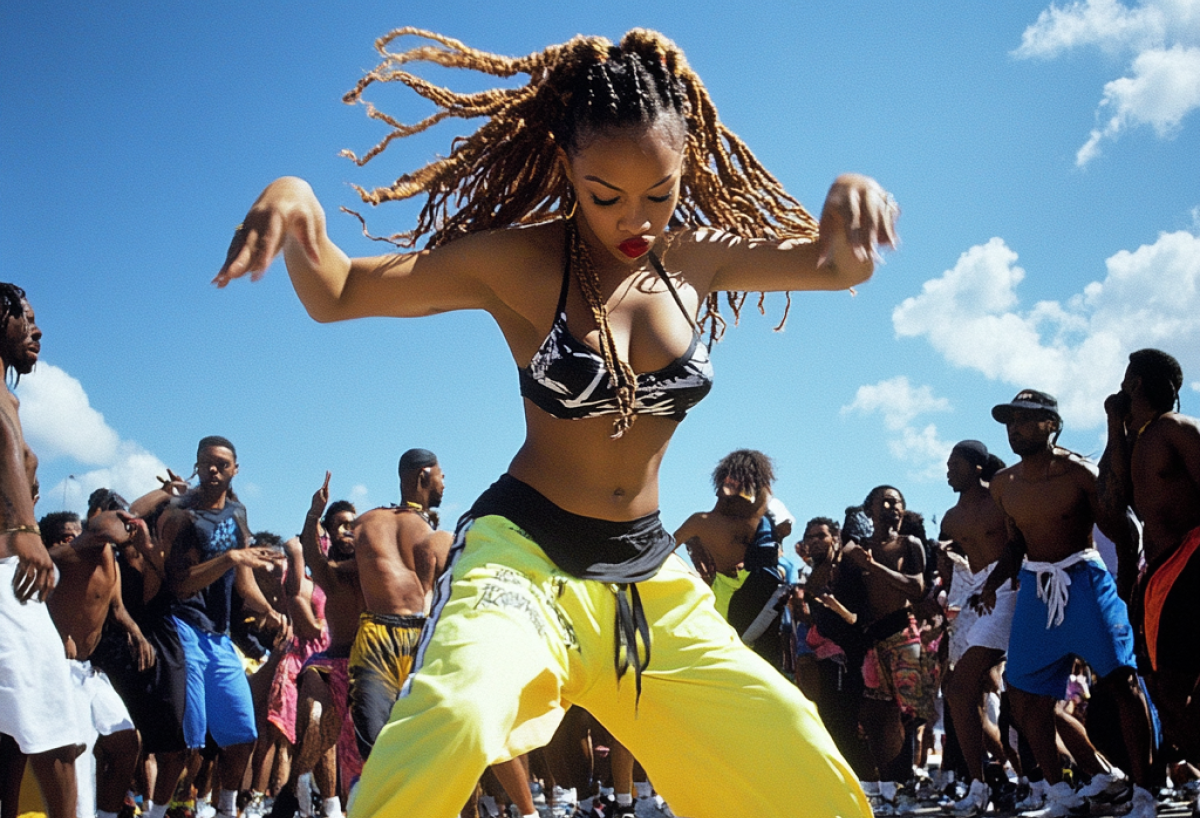Twerking has become one of the most recognizable and talked-about dance moves in modern pop culture, with its roots deeply intertwined with hip-hop music and dance culture. While many view it as a recent trend, the origins of twerking date back much further, evolving through various cultural influences before cementing its place in the hip-hop world. This dance form isn’t just about shaking hips—it’s a powerful expression of rhythm, confidence, and cultural identity.
The Roots of Twerking: More Than Just a Trend
Twerking’s origins can be traced to traditional African dances, particularly those emphasizing hip movements as a form of storytelling and celebration. Dances like the Mapouka from Côte d’Ivoire focused on rhythmic hip isolations long before twerking became known globally. As African cultural elements spread across the world, these dance traditions evolved, finding new expressions in Caribbean and New Orleans bounce music scenes.
In the early 1990s, New Orleans played a pivotal role in bringing twerking into American dance culture. The city’s bounce music scene, known for its uptempo beats and party-centric vibes, made twerking a staple on dance floors across the South. Artists like DJ Jubilee, with tracks like “Do the Jubilee All,” encouraged audiences to engage in these high-energy dance moves. This grassroots movement set the stage for twerking’s eventual crossover into mainstream hip-hop.
Twerking Goes Mainstream: The Hip-Hop Connection
Hip-hop has always embraced dance as a form of expression, with breakdancing, popping, and locking evolving alongside the music. Twerking naturally found a home within hip-hop culture due to its emphasis on body movement and rhythmic connection to the beat. As hip-hop videos became more prominent in the early 2000s, artists began featuring twerking in their music videos, highlighting its place in party scenes and club settings.
Songs like Juvenile’s “Back That Azz Up” and Ying Yang Twins’ “Whistle While You Twerk” played significant roles in bringing twerking into the public eye. These tracks celebrated dance culture and emphasized hip movement as both a visual and physical connection to the music. The rise of music television networks and later platforms like YouTube gave twerking a global stage, transforming it from a regional dance into a worldwide phenomenon.
Twerking in the Social Media Era
The evolution of twerking took another leap with the rise of social media platforms like Vine, Instagram, and TikTok. Viral dance challenges and user-generated content allowed people worldwide to showcase their twerking skills, pushing the dance into new territories. Artists like Megan Thee Stallion and Cardi B have embraced twerking not only as a dance but also as a form of empowerment and body positivity. Their performances often celebrate self-confidence and challenge traditional norms around dance and femininity.
Social media has also made twerking more accessible. Tutorials, dance classes, and viral trends have turned it into both a fun pastime and a legitimate form of fitness. The global nature of these platforms has allowed twerking to evolve continuously, with dancers incorporating new moves, styles, and influences to keep the dance fresh and exciting.
Twerking Clothing: Moving Freely with Style
When it comes to twerking, what you wear can make a significant difference in both comfort and movement. Clothing that allows for full range of motion is key, and that’s where booty shorts come in. Favored by many dancers for their flexibility and fit, booty shorts provide the freedom needed to perform twerking moves without restriction. Their snug fit ensures that fabric doesn’t get in the way, while the variety of styles—ranging from neon colors to metallic finishes—lets dancers express themselves both through movement and fashion. Whether you’re at a hip-hop dance class, a club, or performing at a festival, having the right outfit helps you feel confident and ready to move. Find the best booty shorts for twerking at Devil Walking.
Cultural Impact and Continuing Evolution
While twerking has faced criticism and misunderstandings over the years, it’s essential to recognize its cultural significance and roots. What began as a traditional dance movement has transformed into a symbol of empowerment, celebration, and self-expression within hip-hop culture. The dance has sparked important conversations about body positivity, cultural appropriation, and the fine line between appreciation and misrepresentation.
Twerking continues to evolve, with dancers adding innovative spins, floorwork, and acrobatics to the moves. Its presence in global music festivals, dance competitions, and online platforms shows that twerking isn’t just a passing trend—it’s a lasting element of contemporary dance culture with a rich history.
Final Thoughts
The evolution of twerking in hip-hop culture is a testament to the power of dance as a form of communication and identity. From its African roots to its mainstream embrace in hip-hop, twerking has become a dance that transcends boundaries, inspiring people to express themselves unapologetically.
